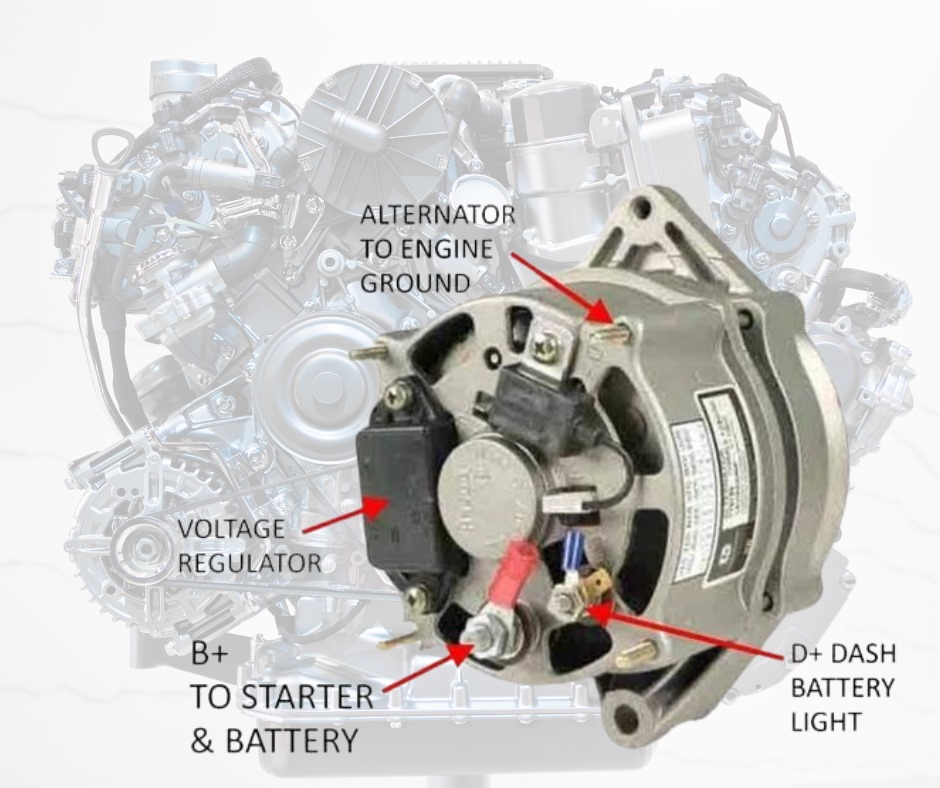Optimizing Performance: The Crucial Function of an Alternator Voltage Regulator

Explore how the alternator voltage regulator is pivotal in your vehicle’s electrical system, ensuring efficiency and longevity.
Understanding the Role of an Alternator Voltage Regulator
An alternator voltage regulator is a key component in your vehicle’s electrical system. Its primary role is to manage the voltage output from the alternator to ensure it remains within a safe and optimal range. This prevents the battery from overcharging or undercharging, which can lead to a myriad of electrical problems.
By maintaining a steady voltage, the regulator ensures that all electrical components in the vehicle, such as headlights, dashboard lights, and the ignition system, operate efficiently. In essence, it acts as a guardian of your vehicle's electrical health, ensuring longevity and reliability.
How Alternator Voltage Regulators Impact Vehicle Performance
The performance of your vehicle is heavily influenced by the efficiency of the alternator voltage regulator. When the voltage is stable, it ensures that the engine control unit (ECU) and other critical systems receive the power they need to function correctly. This translates to smoother engine performance, better fuel efficiency, and prolonged battery life.
On the other hand, a failing voltage regulator can cause voltage fluctuations, leading to erratic behavior in electronic components. Symptoms might include dimming lights, fluctuating fuel gauge readings, or even a dead battery. Therefore, the health of the voltage regulator directly impacts the overall performance and reliability of your vehicle.
Key Features and Technologies in Modern Voltage Regulators
Modern alternator voltage regulators come equipped with several advanced features and technologies designed to enhance their performance and reliability. For instance, many now include microprocessor-based controls for more precise voltage regulation. These regulators can adapt to varying electrical loads and operating conditions, providing optimal performance at all times.
Additionally, some advanced regulators feature temperature compensation to adjust voltage output based on the ambient temperature, protecting the battery from extreme temperature variations. These technologies collectively contribute to better efficiency, reduced wear and tear, and longer lifespan of both the regulator and the vehicle's electrical system.
Troubleshooting Common Issues with Alternator Voltage Regulators
Identifying and troubleshooting issues with your alternator voltage regulator can save you from unexpected breakdowns. Common signs of a faulty regulator include dimming or flickering lights, unusual noises from the alternator, a dead battery, or warning lights on the dashboard.
To diagnose these issues, start by checking the battery voltage with a multimeter. If the voltage is out of the normal range (typically 13.5 to 14.5 volts for most vehicles), the regulator might be at fault. Inspecting the wiring and connections for corrosion or damage can also help pinpoint the problem. In some cases, a professional diagnostic tool may be required to accurately assess the regulator's performance.
Best Practices for Maintaining Your Alternator Voltage Regulator
Regular maintenance of your alternator voltage regulator is essential to ensure its longevity and optimal performance. Routine checks of the battery and alternator can help detect potential issues early. Cleaning the battery terminals and ensuring secure connections can prevent voltage drops and regulator failure.
Additionally, it’s advisable to have a professional inspect the electrical system periodically, especially if you notice any signs of electrical issues. Replacing the voltage regulator as per the manufacturer’s recommendations or when signs of wear become evident can prevent more costly repairs down the line and keep your vehicle running smoothly.

 Loading..
Loading..